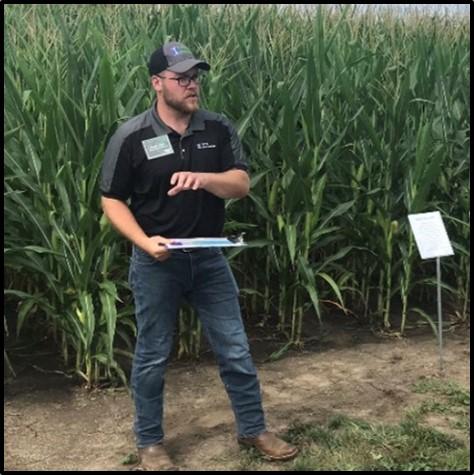
Credit: University of Illinois
URBANA, Ill. – Corn growers can choose from a wide array of products to make the most of their crop, but the latest could bring seaweed extract to a field near you. The marine product is just one class in a growing market of crop biostimulants marketed for corn.
Biostimulants benefit crops and soil, but the dizzying array of products has farmers confused, according to Fred Below, corn and soybean researcher at the University of Illinois.
“Farmers hear the term ‘plant biostimulant’ and think they all do the same thing, and can be used in the same way at the same time. But that’s not the case. There’s huge confusion over what these products do, and when and how they should be used,” says Below, professor in the Department of Crop Sciences at Illinois.
To quell the confusion, Below, along with doctoral student Connor Sible and research specialist Juliann Seebauer, categorized available biostimulant products into eight classes based on their modes of action. Their review, which includes summaries of product composition, mechanisms, efficacy, and application considerations, is published in the journal Agronomy.
Generally, plant biostimulants enhance natural processes in plants or soil that, in turn, boost crop quality and yield through enhanced nutrient uptake, nutrient efficiency, or stress tolerance.
According to the researchers’ classification system, half of the products are live microorganisms, including nitrogen-fixing bacteria, mycorrhizal fungi, phosphorus-solubilizing microbes, or other beneficial microbes. The other half are chemistries or chemical byproducts from “formerly living” organisms, as Sible puts it. These include seaweed extracts, humic and fulvic acids, concentrated enzymes, and biochar.
It’s not always completely clear how or why biostimulants work the way they do, but Sible and Below say there’s a time and a place for each. It’s up to the grower to consider which biostimulant fits their goal.
“When we talk to growers, that’s the first thing we say. What is the problem you’re having, and what is it you’re trying to accomplish? Then we can suggest which product from this or that biostimulant category might be your best bet,” Below says.
Sible adds, “Sometimes farmers will try these products because the sales pitch sounds good, but they won’t get the response they want in the field. So they’ll walk away from all biostimulants. Those kinds of poor outcomes could be prevented with more information. That’s why we felt this was important. We’re actively researching these products to help growers understand what they are and how they work, so they can select the right one for their production system.”
Many of the products target nutrient management, with an eye toward reducing or replacing application of synthetic fertilizers. For example, soybean growers are familiar with nitrogen-fixing microorganisms, but Sible says new technologies, including gene editing, are enabling these microbes to thrive in the corn root zone as well.
“We see in our research that these products can help you be more efficient with your fertilizer,” he says. “It’s all about better management and stewardship of nutrients. If we can add something to our fertilizer plan to make that happen, it’s a win-win.”
Plant biostimulants aren’t new. Specialty growers have applied nitrogen-fixing bacteria, mycorrhizal fungus, seaweed extracts, and similar products for years. But as start-up companies have scaled up production or partnered with big seed and fertilizer companies, they’ve started eyeing the row crop market.
“All the big companies have partnerships in the biological world now, because it’s viewed as part of sustainability or regenerative ag. Some of these products purport to have soil health benefits, and that’s all the rage,” Below says.
Sible adds that some of the big seed companies are already coating seeds with live inoculants to give seedlings a solid start. “A lot of growers are actually using biostimulants without necessarily knowing it.”
Seed coatings are only one method of application. Below says including biostimulant application with standard management practices, such as in-furrow application at seeding or during an herbicide or fungicide pass, provides a free ride for the products.
“When biostimulants can go in with practices that are already being done, that makes their application cost-effective,” he says.
Sible notes the average cost of biostimulants is $8 to $12 per acre, but some of the microbial products push $20 to $25. Despite the expense, Below says a lot of farmers are willing to invest this year.
“Commodity prices are really quite high right now, so farmers might be thinking, ‘Why don’t I try something I normally wouldn’t try?’ We just want to have them try something that has a greater likelihood to be worthwhile,” he says.
###
The article, “Plant biostimulants: A categorical review, their implications for row crop production, and relation to soil health indicators,” is published in Agronomy [DOI: 10.3390/agronomy11071297]. Partial funding was provided by the USDA’s National Institute of Food and Agriculture.
The Department of Crop Sciences is in the College of Agricultural, Consumer and Environmental Sciences at the University of Illinois.
Media Contact
Lauren Quinn
[email protected]
Original Source
https:/
Related Journal Article
http://dx.




